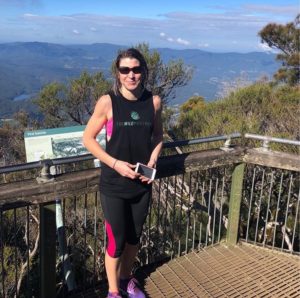Although we don’t market ourselves as a gym that’s about aesthetics – the large proportion of clientele that come to us (and any gym) still would like to lose body fat and possibly gain some muscle. A big problem in today’s society, that is being played out by the fitness industry so well is that people have been told that they need to exercise more and eat less to lose weight. It is true and there is indisputable evidence to show that energy in versus energy out needs to be swinging the right way to lose weight (or gain weight). However this truth has also led us astray in how we go about it which is affecting our ability to be lean the way we would like long term.
The problem stems from the fact that we already live in a society that most of us feel is pushing us to do more and be more. More time at work. More deadlines. More pushing through the day with back to back meetings and having no time to eat, let alone take a deep breath or get outside. More pressure to meet the big mortgage repayments to live in the big house that we need. To drive the nice car that we need. So what happens when we believe that we need to start pushing ourselves more by ‘smashing ourselves’ at the gym?
What happens is that we join a gym and have this association that the more we sweat, the higher our heart rate, the more we are sore, the better our weight loss will be. This may get us some short term wins (great!) but in the long term all we are really doing at this point is:
- Adding more stress and more feeling of pressure to our already long list of pressures
- We are putting band aids on the root problem
- We are trying to make up for lost time (not possible)
The main problem with the above approach is simply we don’t have the foundation to support this type of training where the goal is to ‘flog’ yourself. The foundation of consistent quality sleep (7-9 hours), of stress management and of sound nutrition. When we don’t have the above foundation solid and we add in regular intense training to lose weight the result is normally one that doesn’t stay for long.
So what is the solution? Moving and training is obviously a good thing. Living in extremes is not (long term). The approach we encourage our new clients to take:
- Start with 2-3 Strength sessions per week. We do a thorough initial consultation and then ensure they start conservative on their strength numbers so we can progress over time.
- Know that most of our adaptations happen from the strength training and not from how much you were out of breath the whole session.
- Focus on 1-2 habits with nutrition or sleep or stress management to start building the foundation whilst introducing training without the training overtaking your life.
- Once the above habits are who you are then the next steps can be looked at.
- Setting some clear expectations of where they would like to be in 2 months and one year from now.
- Knowing that small consistent steps daily are much more powerful than big jumps away from who you are weekly or monthly.
By turning around the focus from having to do more and ‘smash one self’ to actually only encouraging a couple of sessions per week to start and then putting in extra effort into building the foundation allows the client to change their environment and make sustainable changes.
We have used this method from when we opened our doors almost three years ago and is why many of our clients who “weren’t gym people” are still with us three years later and have completely changed their beliefs and feelings around who they are and what they are capable of doing.
If you would like to know more or start changing your life and health you can book in for an initial consultation and 2 trial sessions on us. You can do this by clicking HERE.







 [wpseo_address show_state=”1″ show_country=”1″ show_phone=”1″ show_phone_2=”0″ show_fax=”0″ show_email=”1″ show_logo=”0″]
[wpseo_address show_state=”1″ show_country=”1″ show_phone=”1″ show_phone_2=”0″ show_fax=”0″ show_email=”1″ show_logo=”0″]